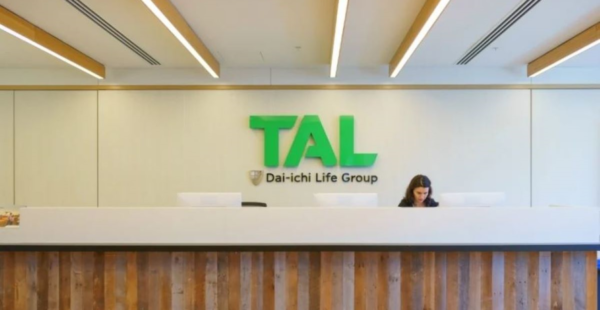Risk insurance reviews

Notwithstanding the important part insurance reviews play in the advice cycle, a challenge has long been convincing the client of same. What follows are some thoughts that may equate to sucking eggs or not ……..
- Pre-Conditioning
Compliance insists that when initial advice is provided, the client is informed there is a sunset to that advice, for example, “These recommendations are only valid for 90 days.”
However, there is arguable merit in advising the client that there is a second sunset that applies to initial advice and, it is this second sunset that acts in a pre-conditioning role for the insurance review.
The script might go thus …..
“Yvonne, the advice I give you has two expiry dates or sunsets. There is the upfront sunset ie my recommendation only applies for 90 days from when I provide it. After that time, you and I would have to check that nothing material had changed and, if it has, the recommendations made might need to be amended.
But even if you accept my recommendations and the insurance cover is put in place, the appropriateness of those recommendations may be impacted in the future by one or both of two things.
First, it may be impacted by something about which you will be aware, for example:
- You might get married or divorced;
- You might start a new job with a significant increase in earnings;
- You might change your employment status from employed to self-employed, or vice versa;
- You might receive an inheritance or purchase an investment property;
or any one of any number of things that require a rethink of your financial plans and/or how best to protect those plans.
However, there are also things about which you will most likely not be aware that could impact on the appropriateness of my recommendations. These are things such as:
- changes in regulation or legislation;
- new insurance products becoming available;
- a change in insurer attitude to how policies are interpreted; and
- even changes in legal precedent;
or, again any one of any number of things that could require a change in your financial plan.
Because of this, I strongly recommend that we meet at least every XX months to check if anything has changed of which you are either aware or unaware, such that the recommendations I have provided need to be altered in some way. If we do not do this, there is a chance that your insurances will not achieve what you wanted If you become sick or injured, or worse .”
The words in the script can, of course be changed to suit but the overriding theme would remain the same ie whether the client is or is not aware of it, previously appropriate risk insurance advice can become outdated.
Importantly, client agreement to the suggestion would be requested albeit the timeframe might be a matter of negotiation.
- Leveraging
By sowing the seed as above, after XX months, the adviser can leverage off the pre-conditioning and send out a very simple letter or email along the lines of:
“Hi Yvonne
You may recall when we provided our initial advice, you and I discussed the sunset to the recommendations that could arise out of certain matters of which you might be aware but other matters of which you would not be aware.
We agreed to meet at least every XX months to see if anything had happened that meant your insurances were no longer appropriate to your needs.
That timeframe is fast approaching so I was going to suggest we set up an appointment. When would it suit you to get together?”
It may even be that the letter might contain one or two brief examples of things about which the client would not be aware, for example:
“As an aside, our research has identified some interesting and potentially relevant insurance product developments of late which could result in significant premium savings.”
Hopefully, the client will remember the pre-conditioning and more readily respond to the review invitation in a positive way.
If, however, the client does not respond or rejects the review offer, a second letter could be sent in which the adviser provides clear advice about the possible consequences of not checking the ongoing appropriateness of cover and even stating that, if a review is not undertaken and the initial advice is later found to be inappropriate, you, the adviser may not be held responsible.
In those halcyon days when Homus Agentus roamed the earth, this approach was called “disturb” but in the current compliant world the reason is to ensure the client is aware of the consequences of not agreeing to a risk insurance review such that they can make that all important informed decision to have one or not have one. To do otherwise, is to leave open a later response from the client “Heck, I was unaware of the consequences of not having a review. If you had told me, I would definitely have agreed to one. Therefore, it is your fault !!!”
- Sampling
Whether or not the above approach will achieve a better response rate can be checked by a comparison with the current response rate. Alternatively, the technique of sampling can be used ie use the current approach for one group of clients, for example, by alpha split although this may not be sufficiently robust as two people in a relationship may use different surnames, so a postcode split may be preferred.
The results of the two or even more sample groups can then be compared such that an ever evolving and improving protocol can be followed.
As positioned at the start of this article, just some thoughts ……….











So under the current compliance regime, you call for a meeting for a policy that costs $3,000. The client needs to increase their cover, which is a an extra premium of $X or decrease of $X. This would likely mean a RoA or SoA, updated fact find, comparison quotes, possible pre assessment & underwriting, etc etc, at which point it becomes unviable for the adviser.
I’ve personally found that when insurers increase a premium by over 40% the client is willing to discuss reviewing their insurance. It often ends with no insurance but all actions have a reaction and the insurers initial action of a huge premium increase loses them a client.